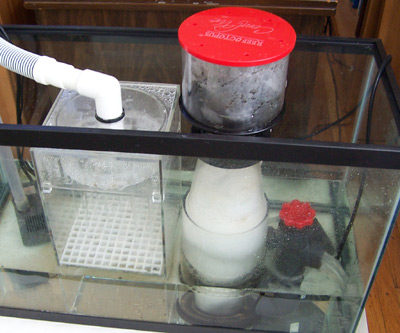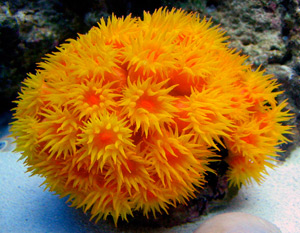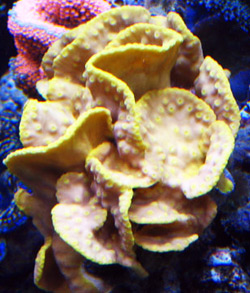It’s been far too long since I last attempted to dissect the dizzying “alphabet soup” of acronyms we marine aquarium hobbyists use to simplify our terminology. So, for today’s post, I’d like to clarify two particular acronyms that arise early and often in every newcomer’s journey to the salty side—SPS and LPS.
What do they stand for?
The terms SPS and LPS are used to designate two broad categories of stony corals and stand for “small-polyped scleractinian” (or “small-polyped stony”) and “large-polyped scleractinian” (or “large-polyped stony”) respectively. As you can probably guess, the distinction between the two groupings is based (ostensibly anyway) on the relative size of the corals’ polyps.
“Typical” representatives of the SPS grouping include corals such as the various Acropora, Montipora, Seriatopora, and Porites species. Among the LPS are fleshier corals such as Trachyphyllia, Plerogyra, and Euphyllia species.
What do these designations tell us?
Well, not as much as you might think. It’s pretty common for hobbyists to make sweeping generalizations about these two categories. For instance, I frequently read or hear that SPS corals demand higher light levels, more robust water movement, and near-pristine water conditions, while LPS corals can get by with moderate light and current and are more forgiving when it comes to water quality. You may also hear claims like, “SPS are for experts only while LPS are suitable for beginners.”
Now, these distinctions would be really helpful if they were actually true. But they aren’t—at least not reliably so. For instance, the popular Seriatopora spp. corals tend to prefer moderate lighting and water flow despite being SPS corals, and you don’t need to be an expert to keep them successfully.
At the other end of the spectrum, if you’re operating on the assumption that LPS corals are easy to keep, you might assume that Tubastraea corals are appropriate for the average novice reefkeeper, when, in my opinion, they’re best left to highly experienced aquarists.
An arbitrary distinction
What’s more, there’s no clear line of demarcation between the SPS and LPS corals. Instead, there is a continuum of polyp sizes in between the smallest SPS and the largest LPS, putting many coral species in a sort of hazy middle ground. It’s pretty obvious that, say, Trachyphyllia (open brain) corals belong among the LPS corals and Acropora belong among the SPS corals, but what about, say, the Turbinaria spp. corals (the so-called scroll, cup, chalice, et al. corals)? Seems to me they can kind of go either way.
The bottom line is, you really have to do your homework, on any coral species—regardless of whether it’s designated SPS or LPS—to determine its captive-care requirements. In fact, it would probably be best if hobbyists were to abandon these arbitrary distinctions altogether since they contribute very little to our understanding of these amazing animals.





